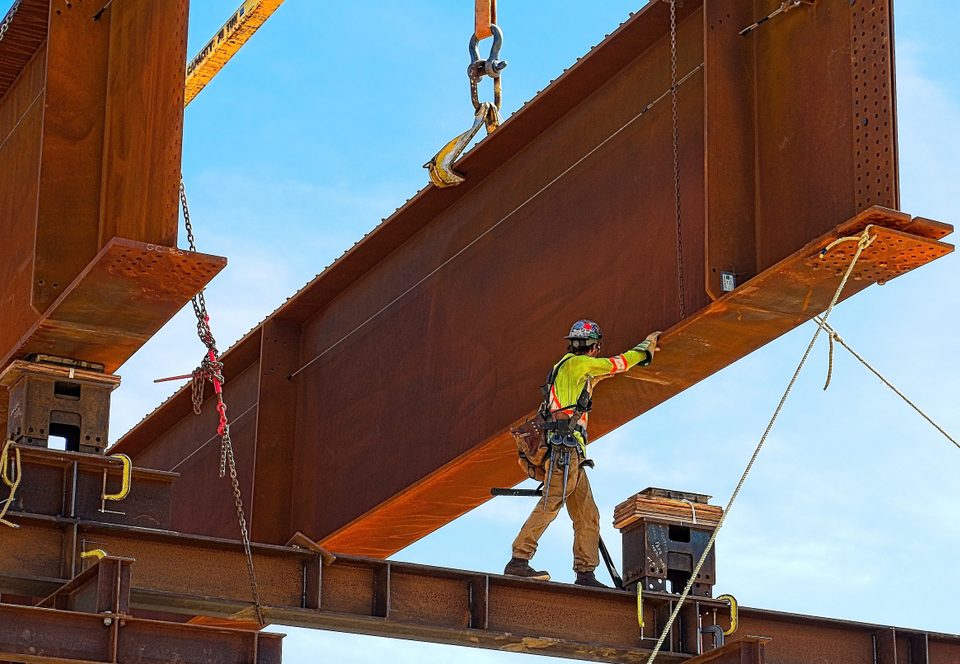Factors Impacting Steel and Metal Market Value

Corten Steel Qualities, Designations and Applications
July 2, 2021
On Laser Cutting Methods for Steel and Other Metals
August 6, 2021Like with any other product or service you’re considering purchasing, price will always be important for any steel or metal materials you’re in need of. And similar to many other fields where supply and demand play a major role in impacting pricing, steel and other metals have a market and common market values – elements that are impacted by a few different factors it pays to be aware of.
At Wasatch Steel, we’re happy to offer a huge variety of steel products, from steel bar to steel sheet, steel tube and many others. We’re also here to assist our clients with all the information they might need to know about the market value and pricing of any steel or metal materials they’re interested in. Not only do we offer competitive pricing for all our products, we’ll also detail exactly why a given metal’s price has either risen or dropped recently, plus the market factors that are playing into its costs. Here’s a primer on the general variables that impact the market value of metals, plus some deeper dives into various steel and other metal types to find out why their prices may have changed since you last checked.
General Metal Market Value Factors
As we noted above, supply and demand themes make up the entirety of the explanation for why metals and their components vary in price. Here are several of the specific supply and demand elements that comprise the market value of steel and other metals today:
- Raw material cost: Perhaps the single most important factor in the cost of a given metal is the cost of the raw materials that went into creating it. Scrap metals are generally used to create these raw materials, and the availability of such scrap metals will play a big role in average pricing.
- Energy costs: The other major piece of metal manufacturing involves the use of expended energy to produce the final product. However, different metals come with different processing needs and related costs, and these will impact final price as well.
- Global factors: The metal world is absolutely a global one, where demand across multiple industries can have a major impact on the costs of materials around the world. If a given region sees increased demand for a certain metal, for instance, this may impact the cost of this metal for other regions in the world, as supply will be lower for them.
- Shipping: Relatedly, many metals require shipping to various locations, even some that are outside the country. Fuel prices have been going up in recent years, which in some cases means that shipping for metals will be a bit more expensive.
- Seasonal factors: Many uses of metal, such as a variety of construction applications, are seasonal in nature. As such, they will often experience price fluctuations where they’re less expensive during slower months, then more expensive during peak demand season.
- Specific industry: There are also many cases where supply and demand fluctuations within the industry itself will cause price changes for metals. Think of the automotive industry, for instance, where a number of very specific components are often required – when a new development is made within this industry that’s widely-adopted, it’s common for metal supply prices to change as a result.
- Regulations and government policy: It’s also important not to forget about the role of governments and regulatory organizations in metal pricing. There are various tariffs and quotas that may be in place for metal transportation and import, which can change pricing; in addition, environmental policies often impact production and change costs.
- Futures: This one is a bit more complex, and generally forecasted by economists and other experts, but expected projections for the future of metal production and availability will also play a role in pricing.
Our next few sections will dig into specific metal types, including steel, and discuss the factors that may impact their costs on the market.
Steel
As we noted above, raw materials are a major cost factor for most metals, and steel is no exception. Iron ore and various forms of scrap are generally used to make steel, but the availability and pricing of these materials can vary significantly.
In addition, steel inventory refilling is another factor to keep in mind. While steel won’t fluctuate in price as much as certain other metal types, it’s fully realistic to expect some ebbs and flows here.
Stainless Steel
In addition to the factors we’ve already gone over, one important variable for stainless steel cost is the mill production involved – or the lack thereof in some cases. On top of this, stainless steel is a material that’s often subject to tariffs and export quotas, and various forms of production supply and demand will affect pricing.
You should also be aware, though, that stainless steel surcharges are added to the base price of raw materials in most cases. This actually helps stabilize cost fluctuations, making stainless steel relatively consistent – though these fluctuations can still happen in smaller ways.
Aluminum
Aluminum is often used in various manufacturing and construction realms, where supply and demand are obviously huge factors. Aluminum is considered a commodity, and can be tracked on the market by two commodities exchanges: LME (London Metal Exchange, the global option) and MWP (Midwest Premium, commodity pricing only for the Midwest).
Copper
Global supply and demand is a big variable in copper pricing, as are futures markets and economic growth. Copper futures are often traded under the COMEX title, which reflects this market.
For more on the factors that impact market value for any steel or metal material you’re in need of, or to learn about any of our steel products or services, speak to the staff at Wasatch Steel today.



